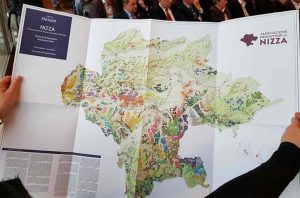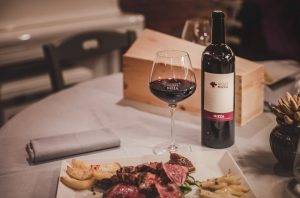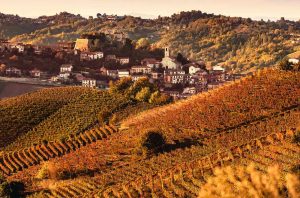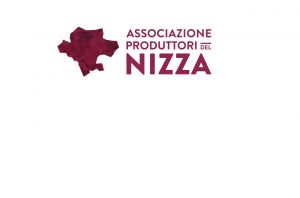Does Nebbiolo have a rival in the hills of northwest Italy? Certamente: it is the noble Barbera grape. In the 21st century, Barbera emerged as one of Piedmont’s most glamorous and fashionable red varieties, producing ripe, bold red wines of impeccable balance and poise. One of the most important sources of these delectable reds is Barbera d’Asti. Here, Barbera finds its most dazzling expression in the Nizza subzone, to the southeast of Asti. Awarded its own DOCG (Denominazione di Origine Controllata e Garantita) designation in 2014, Nizza has gone from strength to strength.
It is certainly one of Piedmont’s most beautiful (and unspoiled) regions. The vineyards surround the picturesque town of Nizza Monferrato, in an area of outstanding natural beauty: vines cover the undulating landscape, interspersed with hilltop villages and traditional farms. Today, over 15 municipalities can produce a Nizza DOCG wine: Agliano Terme, Belveglio, Bruno, Calamandrana, Castel Boglione, Castelnuovo Belbo, Castelnuovo Calcea, Castel Rocchero, Cortiglione, Incisa Scapaccino, Moasca, Mombaruzzo, Mombercelli, Nizza Monferrato, Rocchetta Palafea, San Marzano Oliveto, Vaglio Serra and Vinchio.
The local soils are calcareous, with sandstone and sand-clay found in the upper stratum. Approximately 250 hectares of Barbera (only one grape is permitted under the DOCG rules) are planted in the Nizza zone, with strict guidelines concerning yield and cultivation methods.

Taming Barbera
Viticulture expertise is a vital part of Nizza’s winegrowing tradition – Barbera does not give producers an easy ride. A rigorous pruning regime, therefore, is essential to control the vine’s natural vigour and keep yields within the strict limits defined by the appellation’s guidelines. Meanwhile, Barbera ripens earlier than Nebbiolo, and so benefits from being planted on warm plots with a south-easterly facing aspect. Fortunately, Nizza is covered in exceptional sites that offer good exposure, drainage and elevation. This enables growers to slowly ripen highly aromatic fruit: wines with deep colour, flavour and structure.
According to the DOCG framework, all wines must be matured in wood for at least six months and aged for a total of 18 months (the remainder in bottle) before they are sold. However, the Riserva tier requires all wines to be aged in oak for a minimum of one year and 30 months in total before release. This imbues the wines with a deep purple colour and fatter, more opulent structure. The ideal accompaniment to Piedmontese cuisine.
Of course, approaches to winemaking vary in Nizza DOCG, as elsewhere. One school of thought emphasises ageing in older barrels, yielding a very ‘pure’ expression of the Barbera grape, with no noticeable impact on flavour and aroma. Yet judicious maturation in new French barrique can bring many rewards: wines of greater depth, structure, and grip.

Interpreting the grape
So what do the wines taste like? A good Nizza DOCG Barbera is no shrinking violet. Yet neither do these reds lean heavily into unctuous concentration and brute force. All the constituent elements will be in balance; an intoxicating bouquet of red cherries, strawberries and raspberries will be overlaid with woodland notes. Older wines advance to smoky flavours, with notes of leather and dried fig.
Yet stylistic polarity can also result from the distinctive qualities of a particular vineyard; Barbera planted at higher altitudes may have a more brisk acidity – and slightly less alcohol – than reds produced from low-lying terroirs. Such diversity is increasingly being celebrated worldwide, as winemakers continue to build up a strong presence in key markets. Tourism also plays its part: Piedmont’s food culture attracts well-heeled visitors in search of exquisite white truffles, risottos and game. Indeed, Nizza’s food and wine culture are as inseparable as those of Tuscany. It’s all part of this region’s gigantic appeal.
Most importantly of all, Nizza has established a formidable reputation for its superior interpretation of the Barbera grape, underscored by the quality requirements (low yields, strict ageing regimes) that ultimately result in terroir- expressive, age-worthy wines. In the face of ubiquitous grape varieties and ongoing globalisation, Piedmont’s success in promoting its indigenous styles to a wide audience is reassuring.
Today, Nizza is a sea of artisan producers and family-owned vineyards farmed for generations. Many of these smaller growers bring an intellectual and emotional commitment to their wines, as well as a marketing-savvy approach to exposure. Impressively, here in Nizza, tradition and innovation coexist perfectly on equal terms.
In the countryside around Nizza Monferrato, a bucolic paradise awaits. Founded in the 13th century, the town is blessed with a very beautiful piazza, watched over by the imposing clock tower. For many visitors keen to unwind, sipping an espresso in this ancient square is the highlight of their holiday, yet there is more. Monferrato’s Enoteca Regionale Nizza (regional wine centre) is a one-stop shop for education, wine tasting and retail therapy. Explore the magnificent landscape (via e-bikes) at your leisure, savour Piedmontese gastronomy, or simply watch the world go by. Nizza Monferrato slows the pace of life to a blissful crawl. The best of Monferrato

Discover more about Il Nizza
Connect on
Facebook | Instagram | Twitter








